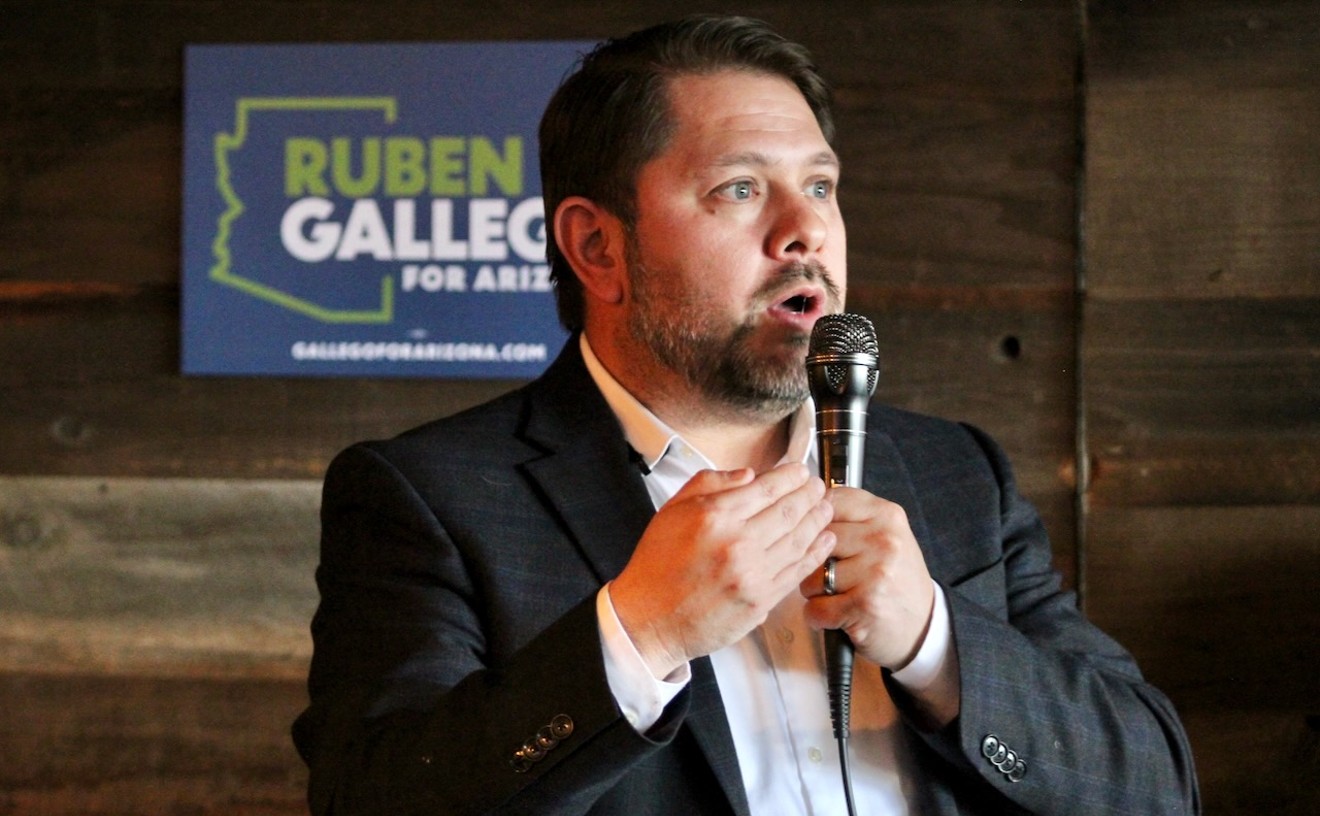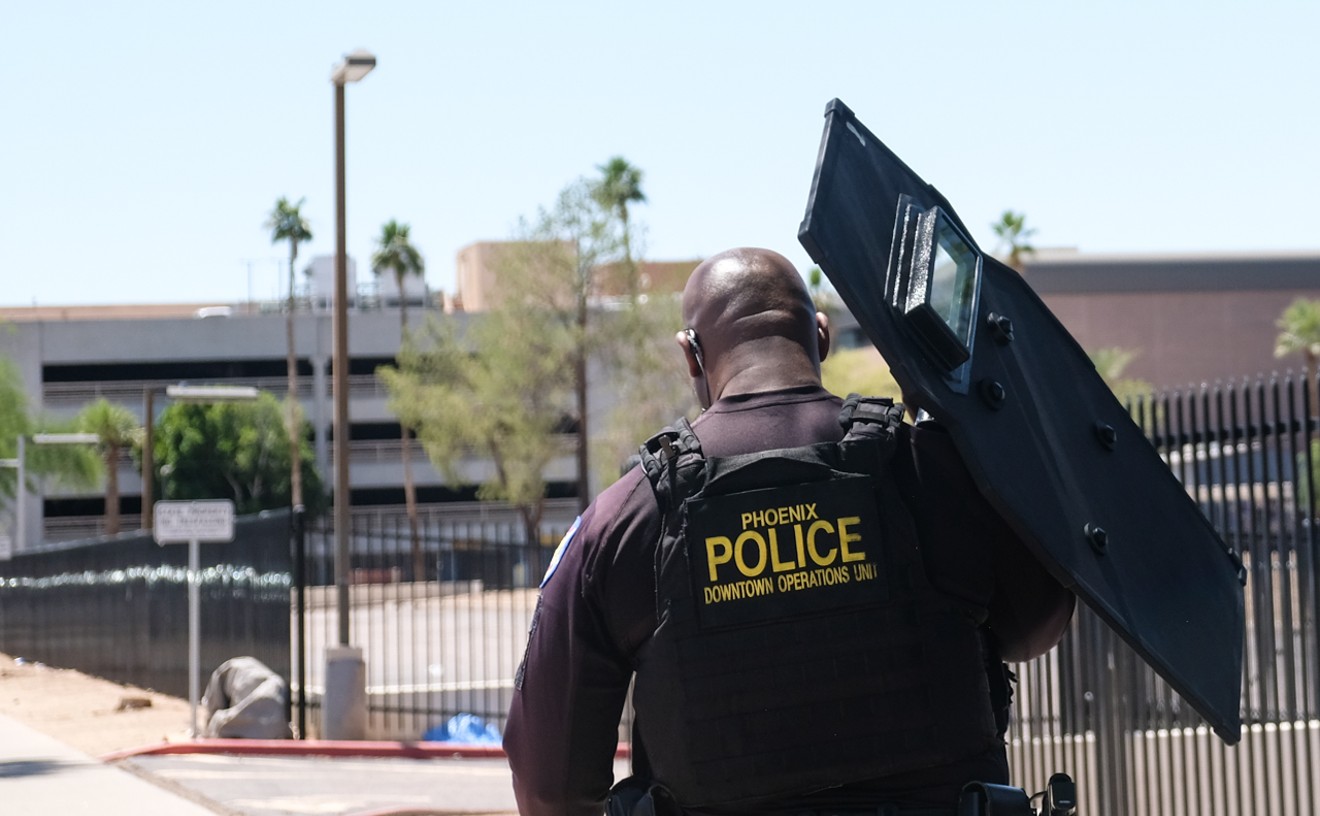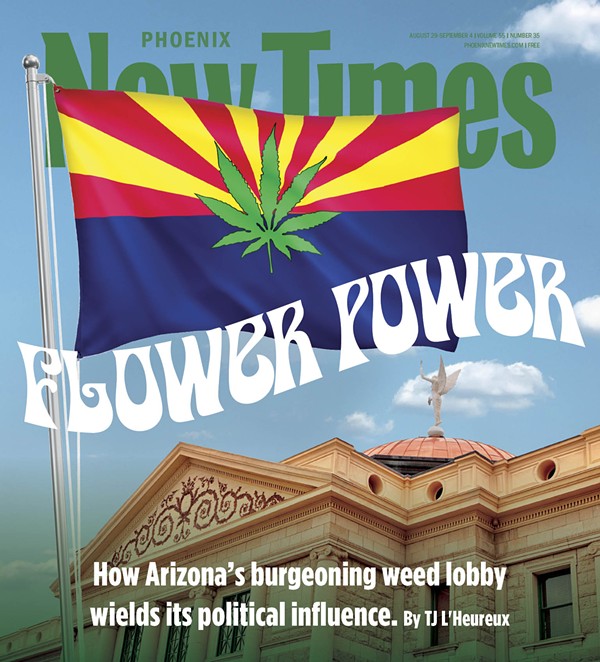In March 2015, Howard Graham Buffett and Cochise County Sheriff Mark Dannels appeared before a hearing of the U.S. Senate Homeland Security and Governmental Affairs Committee titled "Securing the Southwest Border: Perspectives from Beyond the Beltway."
Buffett, son of billionaire investor Warren Buffett, had invested several million dollars in the rural Arizona sheriff's office – and would, by the following year, own two border ranches in the county. Howard Buffett's support of the sheriff's office and activities on these border ranches shared a common cause: securing the nation's southern border.
But, rhetoric espoused by Buffet, Dannels, and others – proclaiming an unfolding national crisis wrought through a border chronically overrun by vicious foreign criminals – does not match the reality of life in the remote stretches of southeastern Arizona.
Buffett's written testimony submitted to the committee dwelt largely on efforts his charitable organization, the Howard G. Buffett Foundation, had undertaken to enforce the border in Cochise County (where Buffett had been a patron of the sheriff's office since 2012), and combat both "push" and "pull" factors of "illegal migration" from Central America and Mexico.

Howard Buffett (center) and friends posing for an iPhone photo near the Mexican border.
Courtesy of Decatur Police Department
Dannels, in his testimony, painted a dark portrait of life on the border – one framed with the unsolved murder of Cochise County rancher Robert Krentz in 2010, and fears of terrorist infiltration through a porous border.
"Historically speaking, illegal border crossings into the United States are well known in southern Arizona and recognized as a part of everyday life within Cochise County and throughout the southwest border. Many years ago, Cochise County citizens were not overly alarmed when they observed a handful of undocumented aliens travelling [sic] through private or public lands in search of jobs," Dannels said in written testimony.
"Unfortunately, over time these groups dramatically increased in size and became more reckless, aggressive, and violent, bringing unrest and fear to the citizens living on the border. Examples of this include reckless high speed pursuits, assaults on citizens, rapes, kidnappings, murders and home invasions to steal one's private and personal possessions. It was apparent the search for the American dream was being over-shadowed by these mules, coyotes, bandits and transnational criminals preying upon our citizens."
It is worth noting, in light of Dannels' claims, that the Cochise County Sheriff's Office and other border region law enforcement agencies receive substantial funding through federal programs, such as those administered by the Department of Homeland Security and the White House Office of National Drug Control Policy.
Reports of border crime, apparently, also attract wealthy philanthropists like Howard Buffett.
But, the statistics are not in accordance with the apocalyptic view laid out for assembled senators.
In fiscal year 2000, U.S. Border Patrol agents working the Tucson Sector (which spans almost the length of Arizona's border with Mexico) apprehended a total of 616,346 "illegal aliens.” CBP records indicate that Tucson Sector was, by far, the busiest corridor for illegal entry at that time – accounting for well over one third of the total 1,643,679 apprehensions made by Border Patrol agents over the entire southwest border in 2000.
By the time Buffett and Dannels appeared before the U.S. Senate Homeland Security and Governmental Affairs Committee in March 2015, rates of undocumented entry had long since reduced to a trickle.
According to CBP records, in fiscal year 2015 agents working the Tucson Sector recorded fewer than 64,000 apprehensions (less than one-tenth the number in 2000). In that year, Tucson Sector was the second-busiest corridor – behind the Rio Grande Valley, which recorded 147,257 apprehensions. Over all, CBP recorded a total of only 331,333 apprehensions along the entire southwest border in 2015 – less than one fifth the total number of apprehensions in 2000.
Border Patrol apprehensions along the southwestern border climbed in fiscal 2016, to 408,870. But, according to CBP data, the number of Border Patrol apprehensions of "illegal aliens" in the southwestern United States the following year – 303,916 (only 38,657 of which occurred in the Tucson Sector) – hadn't been as low since 1972, when a little more than 321,000 apprehensions were made along the southwestern border.
In fiscal year 2018, numbers of "illegal alien" apprehensions in the Rio Grande Valley continued to rise, with 162,262 apprehensions reported by Border Patrol. Accordingly, a private company controlled by Buffett, apparently used for his border enforcement efforts, had purchased hundreds of acres of land on the banks of the Rio Grande River in 2017.
But, even with the uptick in traffic in the Rio Grande Valley, likely driven by a surge of asylum seekers from Central America, levels of apprehensions along the southwest border (which includes both the Rio Grande Valley and Tucson Sector) remained historically low – with a total of 396,579 apprehensions reported by Border Patrol in fiscal 2018.
Given current rhetoric pertaining to the state of the southwest border and undocumented immigration, consider the following: this total number of Border Patrol apprehensions along the entire southwest border in fiscal 2018 – less than 400,000 – is significantly less than the nearly 440,000 apprehensions made in the Tucson Sector alone in fiscal 2005. That year the total southwestern border apprehensions numbered almost 1.2 million.
There is also is a distinct correlation between the performance of the U.S. job market and numbers of undocumented immigrant apprehensions along the southwest border, which casts doubt on claims of immigrant criminality and parasitism.

Howard Buffett was the sheriff of Macon County, Illinois, until the November election.
Macon County Sheriff's Office Facebook page photo
In 1992, the nation was beginning recovery from an economic recession, with a national unemployment rate of 7.5 percent. The number of apprehended Tucson Sector illegal entrants steadily climbed from this point, to its peak of well over 600,000 apprehensions in 2000. In that year, the nation was experiencing its lowest unemployment rate, of only four percent, since 1992.
Following 2000, unemployment rates began to rise, and the numbers of illegal entrant apprehensions began to drop steadily. The economic collapse – which led to 9.3 percent unemployment in 2009, followed by nearly 10 percent in 2010 – saw the further deceleration of illegal entry into the United States.
Only 447,731 "illegal aliens" were apprehended along the southwest border while attempting to enter the economically-decimated United States of 2010— a sharp contrast to the nearly 1.7 million apprehensions made by Border Patrol along the southwest border in 2000, during a time of record low unemployment.
And so it has followed: As the nation's recovery from the economic collapse progressed to record low unemployment (3.9 percent) in 2018, numbers of Border Parol apprehensions in the southwest began to increase, while still remaining historically low.
Where Cochise County Sheriff Dannels' dark claims before the U.S. Senate – of citizens living in the fearful shadow of violent immigrants and their soured American dream – were concerned, veteran Border Patrol agent and Tucson Sector spokesman John Lawson, who had worked the area for years, offered some skepticism.
"Just look at the numbers, and see what they were – see what they are and see what they were – and how things have changed as a result of our increased enforcement efforts. Ah, I don't want to call anybody out – but I'm just telling you, read the stats and see for yourself," Lawson said when interviewed in the summer of 2016.
"There's a lot of people cryin' wolf,” he added.
In his written testimony to the Senate Homeland Security Committee, entered into the Congressional record in March 2015, Cochise County Sheriff Dannels stated six specific crimes, which he intimated were being inflicted upon the people of Cochise County by undocumented immigrants and their smugglers. Those offenses were:
• Reckless high speed pursuits.
• Assaults on citizens.
• Rapes.
• Kidnappings.
• Murders.
• Home invasions, including burglary.
According to records obtained from the Cochise County Sheriff's Office, from 2011 through 2016 (the most recent year for which records are available), CCSO only had only three reports of burglary for which there was believed to be an "undocumented immigrant nexus," as CCSO Public Information Officer Carol Capas phrased it.
Records relating to incidents believed to have an "undocumented immigrant nexus" were obtained from CCSO in response to public records requests seeking reports of the six major crimes enumerated by Dannels before the Senate, dating from 2011 through 2016, related in any way to individuals who had crossed the border illegally.
In none of these burglary cases were any arrests made, and in at least one of these reports there was no reason for suspicion of undocumented immigrants given.
During this same period there were only two reported kidnappings with an "undocumented immigrant nexus" reported to the sheriff's office – both of which were cases in which the immigrants claimed to have been abducted and forced to carry bundles of marijuana across the border, CCSO records show.
Additional records show that from 2011 through 2016 there were only six pursuits in which CCSO deputies took part that had an "undocumented immigrant nexus." These pursuits resulted in the apprehension of fewer than 30 undocumented immigrants. At least two of these six reported pursuits, were alleged to have been perpetrated by U.S. citizens.
During this same time period there were seven instances of assaults with an "undocumented immigrant nexus" reported to the sheriff's office, records show. Two of these reported assaults were alleged to have been inflicted on Border Patrol agents by individuals attempting to enter the country illegally. In one of these instances, an officer was allegedly punched by a man who was resisting arrest. In the other Border Patrol-related case, an agent claimed to have been hit in the face by a bundle of marijuana while apprehending a smuggler (on April 20, 2015) who was "attempting to cross bundles of marijuana into the United States."
The remainder of these reported assaults – five in total – were alleged to have been inflicted on undocumented immigrants by either their smugglers or American citizens. In one case, a juvenile from El Salvador claimed to have been assaulted in a stash house in the Douglas area that he believed to have been owned by English-speaking American citizens. The boy said smugglers had attempted to extort more money from his mother, and that he was assaulted when his mother was unable to pay.
According to records obtained from CCSO, from 2011 through 2016 there was one rape with an "undocumented immigrant nexus" reported to the sheriff's office. The woman who claimed to have been raped was a Mexican national. No information was given in the report relating to her assailant.
During this same six-year period there were only two murders with an "undocumented immigrant nexus" reported to the sheriff's office, CCSO records show.
One of these was reported on July 16, 2016, when the body of a man covered by a sleeping bag was found by the entrance of a guest ranch near U.S. Interstate 10. The body was reportedly that of Ramon Contreras Ramos, a Mexican citizen.
Members of Ramos' family, contacted by phone, advised CCSO personnel that Ramos had entered the United States a few days earlier. They had been contacted by someone traveling with Ramos who said Ramos was suffering from chest and back pains, and that they were dropping him off at a specific exit on the Interstate. A motion-activated camera on the ranch gate reportedly captured images of Ramos being deposited at the gate by individuals traveling in a pickup truck, near midnight July 15.
CCSO classified Ramos' death a homicide because the "unknown subjects in the vehicle had the means/opportunity to deliver Ramos to a hospital for medical care and failed to do so."
The second, and final, homicide with an "undocumented immigrant nexus" reported to CCSO during this time occurred on the night of January 16, 2014, in the remote desert off State Route 80 near Apache, Arizona.
The victim, later identified as Gabriel Sanchez-Velasquez, a Mexican citizen, had been shot twice –once in the chest, and once in the head – by Border Patrol agent Nathan Woods.
According to records, Sanchez-Velasquez had been recently deported. Records indicate that Sanchez-Velasquez had a wife.
According to CCSO records, Border Patrol agents had been pursuing a group of undocumented immigrants headed north, not far from the Arizona/New Mexico state line. Border Patrol spotters using thermal imaging scopes guided Woods to a mesquite tree where Sanchez-Velasquez was hiding. The agent grabbed the man by the arm and pulled him out of the tree. A struggle ensued, in which the two men grappled on the ground. Two shots were fired from the agent's weapon, and Sanchez-Velasquez fell dead.
CCSO reports state that Sanchez-Velasquez had been unarmed, and record at least one account – of a Border Patrol agent who witnessed the shooting from a distance through a scope – who stated that he believed the man to have been secured on the ground, with the agent on top, when he heard the fatal shots fired.
The Cochise County Attorney's Office later declined to prosecute Woods, stating that the killing had been justified.
When asked if any major crimes (or crimes falling within these same six categories) related to illegal entrants had been reported to the Cochise County Sheriff's Office during 2018, Public Information Officer Carol Capas could not recall a single instance and did not provide any further information.














